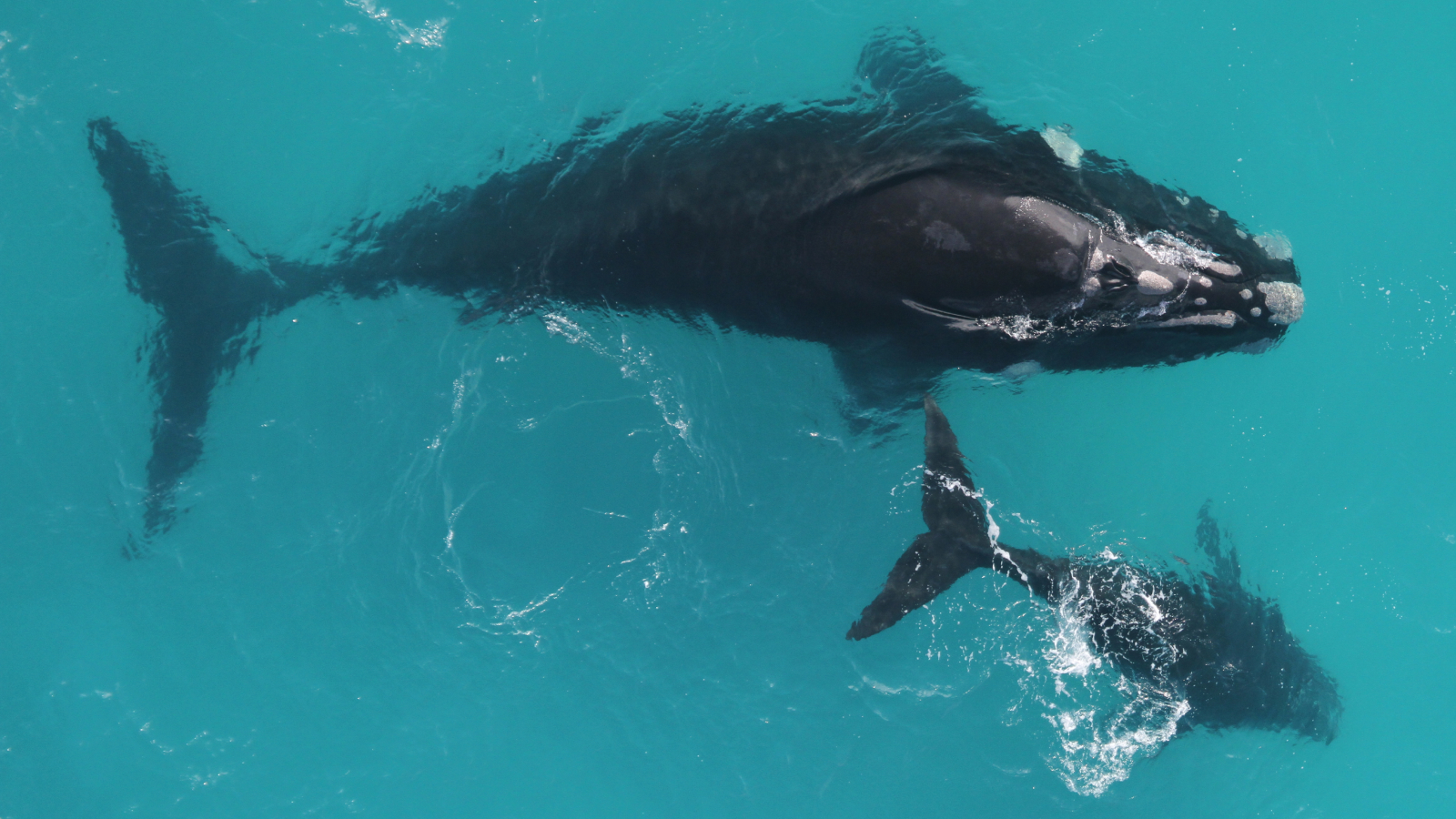
Endangered southern right whales can live twice as long as scientists thought, a new study shows. These whales often reach 130 years old, and may even reach up to 150 years old, the study found.
Southern right whales (Eubalaena australis) are found throughout the Southern Hemisphere but were heavily hunted until the 1960s, when the International Whaling Commission began to ban commercial whaling. People in the whaling industries considered them the "right" kind of whales to hunt because they move slowly, float when dead and have a high yield of lucrative oil and whalebones.
Previously, scientists thought southern right whales had a life expectancy of around 70 years. But these marine mammals are closely related to bowhead whales, and the longest-living mammal ever recorded was an Alaskan bowhead (Balaena mysticetus) estimated to be 211 years old.
"Given everything else we knew about the life history of these species, I hypothesized that they [the Southern right whales] should live longer," study co-author Greg Breed, a quantitative ecologist at the University of Alaska Fairbanks, told Live Science.
However, estimating the longevity of whales can be difficult.
Scientists typically use annular growth layers on teeth, which, like tree rings, are laid down yearly. Many baleen whales, however, do not have such growth layers. And even if they do, tissue wear and tear, and lack of samples could skew the estimation.
But a bigger challenge is that, commercial whaling only ended about 60 years ago. So whales older than that would have survived many decades of intense whaling to become centenarians. It's likely few individuals reached their full lifespans.
To get around these challenges, Breed and his team analyzed whale tracking data of southern and North Atlantic right whales (Eubalaena glacialis) collected over four decades. From 1979 to 2021, scientists led by Peter Best at the University of Pretoria in Cape Town surveyed female southern right whales on the south coast of Africa by photographing them each year. From this survey, the scientists behind the new study identified 2,476 female individuals, 139 of which had known birth years. Breed and his team used these data to construct a survivorship curve. They noted the age and rate at which an individual disappears from the population. From there, they could estimate the fraction of a population surviving to a certain age.
"It's the same thing that the Social Security Administration uses to evaluate how long someone, who's now 65, what their average lifespan would be from that point, rather than from birth," Breed said.
The researchers compared these results with the North Atlantic right whale records collected around the same time and made available by the North Atlantic Right Whale Consortium, a nonprofit conservation group.
The analyses, described in a study published Dec. 20, in the journal Science Advances, revealed that southern right whales have a median lifespan of 70 to 75 years. One in 10 individuals was predicted to survive past 130 years old, confirming Breed's initial hypothesis. In comparison, North Atlantic right whales have relatively short lives with a median lifespan of 22 years, and only a few survive past the age of 45.
"Not because they're biologically very different, but because they have been experiencing a much higher degree of anthropogenic or manmade mortality than the southern right whales," Breed said. North Atlantic right whales are frequently entangled in fishing gear, especially lobster pots and crab pots that are fixed on the bottom of the ocean, he said.
Even with the current estimate, southern right whales only live half as long as bowheads. The researchers think this is linked to the right whales living in places devoid of sea ice.
"There's reason to think that living in the ice could contribute to longer lifespan," Breed said. For example, Orcas (Orcinus orca) or killer whales, which hunt both bowheads and southern right whales, are very averse to going into sea ice. "So the bowheads could always get into the sea ice, and the killer whales wouldn't follow them," Breed said. As sea ice disappears, bowheads may no longer be able to avoid predation.
Understanding an animal's lifespan affects the way we think about conservation, especially their reproduction pattern and their potential longevity post-whaling, Breed said. In the future, he and his team would like to investigate the population of old individuals that survived whaling and study how whale populations recover to pre-whaling levels.







